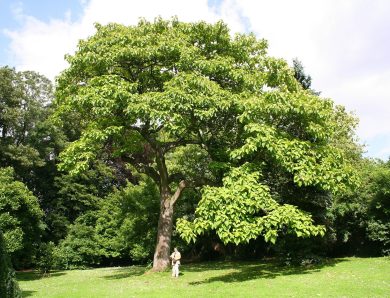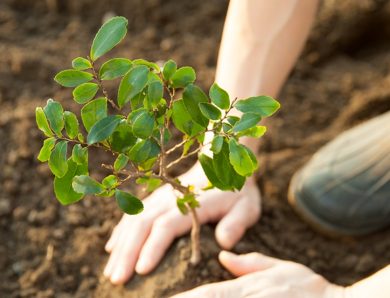
Understanding the Natural Timeline of Leaf Decomposition
The intricate process of leaf decomposition plays a pivotal role in maintaining the delicate balance of ecosystems. As leaves fall and accumulate on the ground, they undergo a transformation that significantly contributes to nutrient cycling and soil enrichment. This cycle not only nourishes the soil but also provides sustenance to a wide array of microorganisms, fostering a thriving ecological community.
Several factors orchestrate the timeline of leaf decomposition, influencing the speed at which leaves transform into invaluable organic matter. Climate conditions, such as temperature and precipitation, dance in harmony with the microbial workforce, dictating the pace of decomposition. Leaf quality, defined by its chemical composition, alters the complexity of this symphony, affecting the nutrient release process and overall ecosystem health.
Leaf Decomposition: A Natural Timeline
Initial Breakdown and Leaching
As leaves descend to the ground, the first stage of their transformation begins. Rain and moisture kickstart the process by breaking down the leaf’s outer structure, causing it to soften and become more porous. This initial breakdown not only prepares the leaf for further decomposition but also triggers leaching, where water washes away soluble compounds like sugars and amino acids. These essential organic materials infiltrate the soil, enriching it with the building blocks for future growth.
Fragmentation and Microbial Activity
In the next phase, the fragmented leaves, now more accessible to the environment, become hosts to a thriving ecosystem of microorganisms. Bacteria and fungi seize the opportunity to feast on the partially decomposed matter. As they consume the leaves, they release enzymes that break down complex compounds into simpler forms. This microbial buffet not only accelerates the decomposition process but also generates heat as a byproduct. This rise in temperature further expedites the breakdown, creating a harmonious cycle of organic recycling.
Chemical Transformation and Nutrient Cycling
The final chapter of leaf decomposition unfolds through intricate chemical transformations and nutrient cycling. The compounds broken down by microbes undergo further metamorphosis, resulting in the release of vital nutrients like nitrogen, phosphorus, and potassium. These nutrients are returned to the soil, ready to nourish plants anew. Simultaneously, the soil’s texture improves as decomposition products bind together, enhancing its ability to retain moisture and support healthy root systems. This stage marks the culmination of the leaf’s journey, contributing to the circle of life in the ecosystem.
Factors Influencing Leaf Decomposition
Climate’s Impact on Decomposition
The climatic conditions of a region play a pivotal role in determining the pace of leaf decomposition. Variations in temperature directly influence the activity of decomposer organisms. Warmer climates accelerate decomposition by fostering heightened microbial activity, resulting in quicker breakdown of organic matter. In colder environments, the process slows down as microbes become less active. This interplay between temperature and microbial action shapes the natural timeline of leaf decay.
Role of Moisture and Oxygen
Moisture and oxygen availability significantly shape the decomposition process. Adequate moisture content is essential for microbial growth and enzyme activity. Damp environments provide the ideal conditions for decomposers to thrive, expediting the breakdown of leaves. Conversely, overly dry conditions hinder microbial activity and slow decomposition. Oxygen, on the other hand, facilitates the decomposition process by supporting aerobic organisms responsible for efficient organic matter breakdown. In anaerobic settings, decomposition occurs at a slower pace due to the limited presence of oxygen. Balancing moisture and oxygen levels is essential in understanding the dynamics of leaf decomposition across ecosystems.
Applications and Implications
Leaf Litter Management in Landscaping
Effective leaf litter management plays a pivotal role in landscaping practices. When leaves naturally fall and accumulate, they not only create an untidy appearance but can also hinder the growth of grass and plants. By promptly removing leaf litter, landscapers enhance the aesthetic appeal of outdoor spaces, maintaining a neat and organized environment. This practice not only fosters a cleaner appearance but also prevents potential pest habitats, reducing the need for excessive pesticide application. By understanding the rhythm of leaf decomposition, landscaping professionals can tailor their maintenance routines to ensure the longevity and vibrancy of outdoor areas.
Carbon Sequestration and Climate Change
The natural timeline of leaf decomposition significantly contributes to the intricate balance of carbon sequestration, which in turn affects global climate patterns. As leaves decay, they release carbon dioxide back into the atmosphere. However, when managed sustainably, leaves can be incorporated into composting systems that facilitate carbon-rich organic matter’s transformation into nutrient-rich soil amendments. This process minimizes carbon dioxide emissions and enriches soil fertility simultaneously. By recognizing this natural cycle, we can harness leaves’ potential as valuable allies in mitigating climate change and promoting a more environmentally resilient future.
Biodiversity and Soil Health
Understanding the pace of leaf decomposition is essential for preserving biodiversity and nurturing soil health. As leaves break down, they create a microhabitat that shelters an array of organisms, from insects to fungi. These creatures form a vital link in the ecosystem chain, promoting biodiversity and enhancing soil fertility. The gradual release of nutrients during decomposition replenishes the soil, cultivating an environment in which plants thrive. This intricate dance of decay fosters a harmonious relationship between the organic world and the soil, underscoring the significance of nurturing this process for the overall health of our landscapes and ecosystems.
In the grand tapestry of our natural world, the gradual transformation of fallen leaves into nutrient-rich organic matter is a testament to life’s intricate web. This process, influenced by climate, microbial communities, and nutrient cycling, shapes the very foundation of ecosystems. From the initial softening of leaves by rain’s touch to the bustling microbial feast that follows, and finally, the release of essential nutrients back into the soil, the journey of leaf decomposition is a harmonious dance that supports life at every step.
Publisher’s Details:
Green Leaf Zone
208 W 59th St, Los Angeles, CA 90003
(866) 696-2762
greenleafzone.com
As leaves undergo decomposition, proper land maintenance becomes crucial. Clearing the accumulated leaves not only benefits the soil but also enhances property aesthetics. For effective brush clearing, consider the trusted brush clearing services in Los Angeles, CA by Green Leaf Zone, known for their best-in-class solutions.
Read: Why Brush Clearing is Beneficial for Your Property
<iframe src=”https://www.google.com/maps/embed?pb=!1m14!1m8!1m3!1d3308.2258384672423!2d-118.2763839!3d33.9867325!3m2!1i1024!2i768!4f13.1!3m3!1m2!1s0xa199311d94fd3e57%3A0x1342eaebbc221aa5!2sGreen%20Leaf%20Zone!5e0!3m2!1sen!2sph!4v1683554131951!5m2!1sen!2sph” width=”600″ height=”450″ style=”border:0;” allowfullscreen=”” loading=”lazy” referrerpolicy=”no-referrer-when-downgrade”></iframe>




